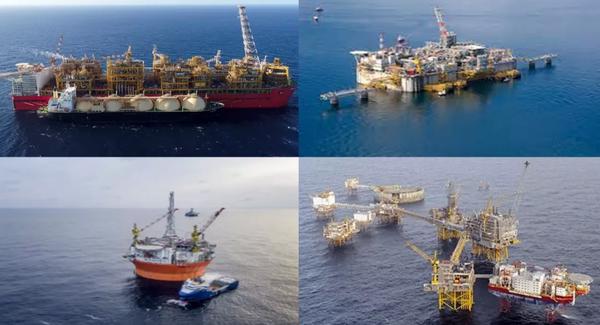Core Power sets out concept for atomic green ammonia plant for shipping
UK-based nuclear power developer Core Power has released a report citing plans to use floating offshore platforms powered by nuclear energy to mass-produce ammonia as a marine fuel.
 PHOTO: A variety of possible structure designs for a nuclear-powered floating ammonia production facility. Core Power
PHOTO: A variety of possible structure designs for a nuclear-powered floating ammonia production facility. Core Power
The company proposes an offshore floating power facility housing an atomic reactor and power conversion system.
Core Power has partnered with Terrapower to develop a molten salt reactor (MSR), which will use high assay low enriched uranium (HALEU) to produce heat that can be converted to electricity.
The offshore power facility would generate heat or electricity transferred to a nearby offshore ammonia production plant. Separate installations can prevent dangerous interactions and make it safer to produce green ammonia with nuclear energy, the company claims.
Ammonia could be produced from abundant seawater and air through electrolysis. Saltwater would be pumped out of the sea and desalinated, with resultant freshwater fed into electrolyser cells to produce hydrogen and oxygen.
The hydrogen can be compressed and combined with nitrogen extracted from atmospheric air to produce ammonia through the well-known Haber-Bosch process.
Core Power says electrolysers are key in ammonia production and typically require steady access to renewable electricity.
An atomic energy-powered ammonia plant can run over 90% of the time, which is far more than plants powered with electricity from intermittent wind (35%) and solar (24%), it says citing US figures from 2020 on utility scale generators.
So-called solid oxide electrolysers (SOEC) are particularly interesting as they can use heat in addition to electricity as energy, Core Power says.
The ammonia production plant would be emission-free and have tanks to store ammonia, before it is loaded onto feeder vessels or bunker barges.
It would initially have capacity to produce 1 million mt of ammonia per year using 1.2 GW of electric power, which would be reduced to 0.9 GW by 2050, says Core Power.
If it can produce 1 million mt of ammonia would be equivalent to 400,000 mt of VLSFO. Ammonia only has about 40% of the energy content of VLSFO, so ships fuelled with ammonia would need about 2.5 times more fuel, the company says.
Nuclear energy is by no means widespread in fuel production, but last November the US Department of Energy awarded a grant of $794,000 to the American Bureau of Shipping to commercialise nuclear technology use in the maritime industry.





